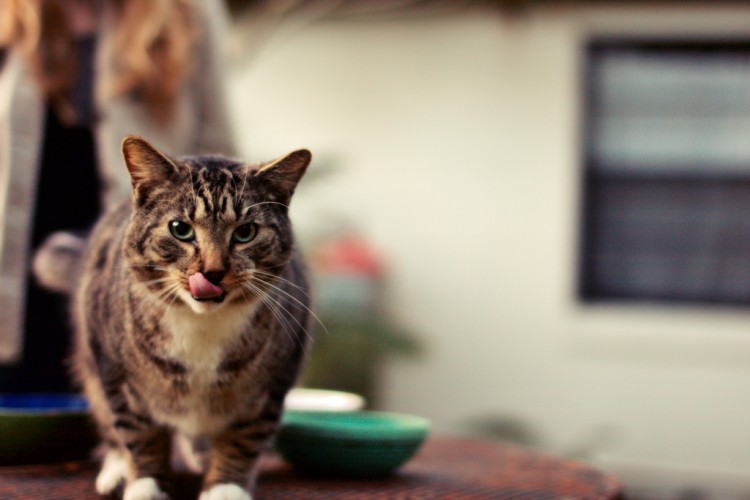
As the saying goes, you are what you eat.
Or rather, your cat is what she eats, which is especially important when it comes to prescription diets. The right food can increase your pet’s life expectancy, and in some cases, it’s as powerful as medication.
As a veterinarian, when I prescribe a food, however, there’s often a drawback. It’s called “being a fussy eater.” The reply to my recommendation usually goes something like this: “Fluffy won’t eat that new food. She’d rather starve, so I’ve gone back to the old stuff.”
To help you overcome this issue, let’s look at how you can successfully swap your cat onto that new diet.
The Insider’s Guide to Changing a Cat’s Diet
First off, don’t expect your cat to change foods overnight, but be prepared for a 4- to 8-week swap — yes, really!
It may help to understand why prescription diets are so important.
1. Food Benefits
Let’s take kidney disease, where a prescription diet is actually a treatment.
Renal diets are proven to prolong life, slow kidney damage and help the cat feel better by:
- Containing restricted amounts of protein (giving the kidney less work to do)
- Keeping phosphate levels down (processing phosphate causes scar tissue to form in the kidney)
- And offering high levels of B vitamins (to help appetite) and omega-3 fatty acids (to protect the kidney from damage)
Other conditions that benefit from special diets include lower urinary tract disease, diabetes mellitus and hyperthyroidism.
Feeding a prescription diet could be the difference between taking pills or not — which, considering how difficult cats are when it comes to pills, has to be a good thing.
2. Wait Until They’re Well
Imagine you’ve got a stomach bug. You feel nauseous, and then someone puts a plate of sushi in front of you. Chances are, every time you see sushi once you are well, you’ll feel sick. The same principles apply to changing your cat’s diet.
Don’t make the change when the cat is ill — she’ll forever link that new food with feeling sick (the technical term is “food aversion”). Let the vet treat the cat and put the spring back in her pounce, and then start the transition.

3. Early Start
Many people are reluctant to change their cat’s diet when the problem is in the early stages of kidney disease because of the expense. However, this is exactly when you’ll get the most benefit because the diet slows damage and extends life.
Yes, prescription diets are more expensive than superstore foods, but think of it in terms of saving money on medications further down the road.
4. Give Your Cat Choices
Cats like to pick and choose their favorites, so offer a choice of manufacturers, formulations and flavors. Also, don’t be afraid to rotate the menu to keep your cat interested.
5. Side Order
Instead of mixing the new food in with the old (which cats may find yucky), offer it in a separate bowl on the side. Gradually cut back on the quantity of the original food and increase the offering of new food.
Be patient — again, it takes 4–8 weeks for your cat to catch on, so don’t be put off if she turns up her nose for a week or 2 or 3…you’ll get there in the end.
Was YOUR Pet Food Recalled?
Check Now: Blue Buffalo • Science Diet • Purina • Wellness • 4health • Canine Carry Outs • Friskies • Taste of the Wild • See 200+ more brands…

For the uninitiated, here’s what a cat pill popper looks like in action:

6. Medication Mix
Don’t mix medications with the new food. If your cat discovers a pill just as she’s gathering her courage to face the new food, she’s going to assume it’s always booby-trapped and refuse it permanently.
Either buy a pill popper and put the tablet straight down the hatch, or mix it with a treat to make it a less of a bitter pill to swallow.
7. And Finally…
Extra tips on how to change the menu successfully:
- Never starve your cat: It does more harm than good. Let her eat something rather than nothing.
- Take time: I’m not kidding about those 4–8 weeks.
- Appetite stimulants: If your cat has a poor appetite, period, talk to your vet about medication to improve it.
- Choice: Don’t be afraid to rotate your way through different manufacturers and flavors to keep the novelty factor high.
- Expect exceptions: Cats are contrary creatures, so if your cat prefers the new food mixed in and not on the side, go with the flow.
This pet health content was written by a veterinarian, Dr. Pippa Elliott, BVMS, MRCVS. It was last reviewed Oct. 13, 2018.



